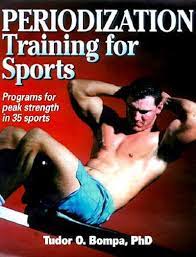Periodization Training for Sports
Periodization training is a systematic approach to sports training that involves dividing the training program into distinct periods or phases. Each period focuses on specific goals and objectives, with the overall aim of optimizing performance and preventing overtraining.
There are several key principles that underpin periodization training:
- Phases: The training program is divided into different phases, such as preparation, pre-competition, competition, and transition periods. Each phase has its own specific focus and objectives.
- Progressive overload: The intensity and volume of training gradually increase over time to challenge the athlete’s body and stimulate improvements in performance.
- Recovery: Adequate rest and recovery periods are built into the training program to allow the body to adapt to the stress of training and reduce the risk of injury.
- Variety: Different types of training methods, such as strength training, endurance training, speed work, and skill development, are incorporated into the program to ensure a well-rounded approach to athletic development.
By following a periodization training plan, athletes can achieve peak performance at key times during their competitive season. For example, a track athlete may focus on building strength and endurance during the preparation phase, before transitioning to speed work and race-specific drills in the pre-competition phase leading up to important competitions.
In addition to improving performance, periodization training can also help reduce the risk of burnout and overtraining by providing structured breaks and recovery periods throughout the year. This can lead to better long-term health and sustainability in an athlete’s career.
In conclusion, periodization training is a valuable tool for athletes looking to optimise their performance and achieve their full potential in their chosen sport. By carefully planning and structuring their training programs according to specific phases and objectives, athletes can progress steadily towards their goals while minimising the risk of injury or burnout.
Key Advantages of Implementing Periodisation Training
Structuring a Periodisation Training Plan: A Comprehensive Guide
4. The Applicability of Periodisation Training Across Diverse Sporting Disc
- What is periodization training for sports?
- What are the benefits of periodization training?
- How is a periodization training plan structured?
- Is periodization training suitable for all sports?
- What role does recovery play in periodization training?
What is periodization training for sports?
Periodization training for sports is a structured approach to athletic training that involves dividing the overall training programme into specific periods or phases, each with its own distinct focus and objectives. This method allows athletes to systematically progress through different training intensities and volumes over time, aiming to peak at key points in their competitive season. By incorporating phases such as preparation, pre-competition, competition, and transition periods, periodization training helps athletes optimise their performance, prevent overtraining, and enhance their overall athletic development.
What are the benefits of periodization training?
Periodization training offers a range of benefits for athletes across various sports disciplines. By structuring training into distinct phases with specific goals, athletes can optimise their performance potential. One key benefit is the ability to target different aspects of fitness and skill development at specific times, leading to a well-rounded improvement in overall athletic performance. Additionally, periodization training helps prevent overtraining and burnout by incorporating rest and recovery periods into the program. This approach also allows athletes to peak at crucial times during their competitive season, enhancing their chances of success in important events. Overall, the systematic nature of periodization training enables athletes to progress steadily towards their goals while minimising the risk of injury and maximising long-term performance sustainability.
How is a periodization training plan structured?
A periodization training plan is structured in a systematic and strategic manner, typically divided into distinct phases to optimise athletic performance. The plan usually begins with a preparatory phase, focusing on building a solid foundation of strength, endurance, and overall fitness. This phase is followed by a pre-competition phase, during which the intensity and specificity of training increase to prepare the athlete for upcoming competitions. The competition phase is where the athlete aims to peak in performance, with training tailored towards maximising results during key events. Finally, a transition phase allows for recovery and regeneration before starting the next training cycle. Each phase has specific goals and objectives that contribute to the overall progression and success of the athlete in their sport.
Is periodization training suitable for all sports?
Periodization training can be beneficial for a wide range of sports, but its suitability may vary depending on the specific demands and characteristics of each sport. While periodization training is commonly used in individual sports such as athletics and swimming, team sports like football and basketball can also benefit from structured training periods. The key lies in tailoring the periodization plan to align with the unique requirements of each sport, taking into account factors such as competition schedule, physical demands, and injury risks. By customising the periodization approach to suit the needs of the sport and individual athletes, it is possible to maximise performance gains and minimise the risk of overtraining or burnout.
What role does recovery play in periodization training?
Recovery plays a crucial role in periodization training for sports as it is during the rest and recovery periods that the body repairs and adapts to the stress of training. Adequate recovery allows athletes to recover from intense workouts, reduce muscle soreness, prevent overtraining, and minimise the risk of injury. By incorporating structured rest periods into the training program, athletes can optimise their performance gains and ensure that they are able to sustain long-term progress throughout their competitive season. Recovery also helps to replenish energy stores, improve focus and concentration, and promote overall well-being, making it an essential component of effective periodization training for sports.
Tags: challenge athlete's body, competition phase, distinct periods, key principles, objectives, optimizing performance, periodization training, periodization training for sports, phases, pre-competition phase, preparation phase, preventing overtraining, progressive overload, recovery, specific goals, sports, stimulate improvements in performance, systematic approach, training program, transition periods, underpin periodization training
